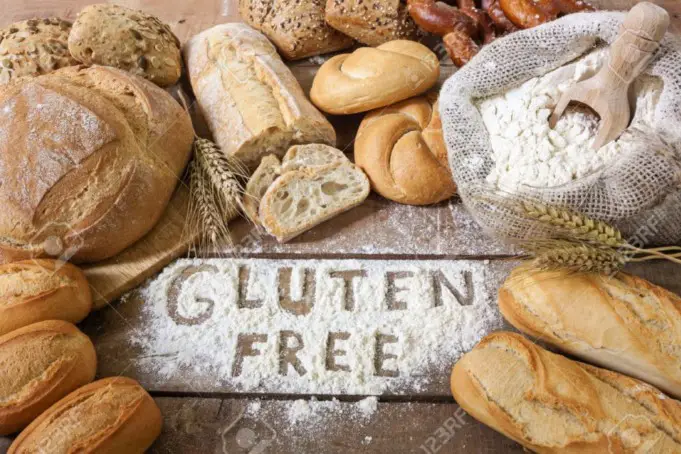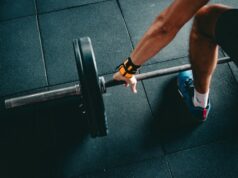Almost everyone is looking for ways to look and feel great. The internet and social media are crawling with ideas and quick tips on how to get a bikini-body by summer. Teas and smoothies, low-carb and vegan, gym memberships and at home workouts—all of these options claim to help you lose the weight and get you in shape fast. And they can, for the most part.
However, for a small majority, diet and exercise aren’t that simple. Other variables factor into the health equation. Celiac disease, for example. People commonly refer to Celiac as the no wheat, no gluten disease. It’s a bit more complex. But no wheat and no gluten is a pretty good summation. Celiac is not the end-all for those seeking to lose weight, as there are gluten-free weight loss options available to help Celiac sufferers maintain a healthy diet and weight.
What is Celiac Disease?
Celiac disease is not just an allergy to products filled with gluten. It’s an autoimmune disorder where damage to the small intestine occurs because of the ingestion of gluten. Unfortunately, it is genetic and 1 and 100 people around the world are affected by it.
Most people don’t know they have Celiac, as they pass off abdominal discomfort and other body irregularities as digestion issues. Here are some common signs of Celiac Disease:
- Abdominal Pain (bloating and gas)
- Acid Reflux
- Lactose Intolerance
- Anemia
- Anxiety and Irritability
- Joint Pain (achy bones)
- Infertility
- Eczema
This list is not exhaustive and is not meant for self-diagnosis. It’s important to see a professional to determine if you have Celiac disease.
How is Gluten Produced?
Gluten is not man-made. It’s a protein found in common grains—wheat, oats, barley, and rye. It can also be found in liquids like soy sauce (wheat-based), barley milk, and malted milkshakes.
It’s important to read the labels on food packages to make sure you don’t consume a product the contains gluten.
6 Gluten-Free Weight Loss Options
Fresh Fruits
Yes, an apple a day still keeps the doctor away. As a matter of fact, studies prove that eating at least two servings of fruit daily provides a healthy source of vitamins A, C, and Folate.
Vitamin A – Found in one small orange or mango, vitamin A assists in maintaining healthy skin and teeth.
Vitamin C – Kiwi and strawberries are excellent sources of vitamin c. Vitamin C helps the body absorb iron—a substance that helps the body heal by carrying oxygen through the body via red blood cells. The absence of iron in the blood causes anemia. Celiac sufferers who consume gluten-free fruits high in vitamin C aid their bodies in the fight against anemia.
Folate – Folate is the DNA vitamin. It helps form the red blood cells that prevent birth defects by helping the body grow healthy tissue and cells. Eating healthy servings of fruit with balanced meals and exercise throughout the day promotes weight loss without being subjected to the adverse effects of gluten.
Vegetables
Vegetables are not only cost-efficient, they are weight loss effective. Three servings of raw vegetables a day reduces fat intake. How?
Raw (cruciferous) vegetables are high in fiber. Fiber slows down the gastric process in the stomach, providing volume and making food take longer to digest. The end result is you feel fuller longer and are less likely to waste calories on snacks that are high in fat and probably contain gluten.
Beans
Beans are not just good for the heart, they are great for weight loss. Beans are low in fat and high in fiber. They also provide versatility in meal options.
If you are looking to go the vegan, gluten-free route, they are great meat substitutes. Beans can be used in salads, soups, and burgers. Try adding a half a cup to at least two meals throughout the day to add depth to a meal. They are a satisfying option.
Grains
You can still eat bread and loss weight. It’s all about portion control. And for those with gluten sensitivity, swapping out glutenous grains with those sans gluten. Brown rice, corn, quinoa, flax, and teff are superb exchanges to wheat, oat, barley. Be sure to buy whole grain and veer away from any grains that are refined. Whole grains have natural fiber and vitamins that are better for the body and weight loss.
And no, cereal is not a pleasure of the past for those who suffer from Celiac. They are plenty of gluten-free options on the shelves. Be sure to look for the “GF” label and be aware of serving sizes.
Nuts
Nuts are an important part of daily nutritional values. People shy away from nuts because they are high in fat. But that fat is healthy fat.
Fats in nuts are unsaturated, meaning they don’t negatively affect your cholesterol or put your heart at risk for disease. Nuts are high in mono and polyunsaturated fats. These fats lower bad cholesterol, while the fiber and omega-3 fatty acids found in nuts protect the heart from irregularity and attack.
Vitamin E and plant sterols are also present in nuts. Vitamin E helps keep the arteries clear, while plant sterols assist with lowering cholesterol.
It is recommended that those trying to maintain a healthy weight or achieve weight loss, eat a small serving of nuts once a day.
Meat
All meats are gluten-free unless they’ve been packaged in sauces that contain gluten. A healthy serving of meat each day contains enough protein to help those embattled with Celiac achieve weight loss.
Protein consumption varies by age and sex. Men should eat no more than 56 grams a day and women should stick close to 46 grams. White-meat proteins are lower in saturated fats and are a better gluten-free weight loss choice over dark and red meats.
Try These Gluten-Free Weight Loss Options
Having Celiac Disease should not stop you from living a normal, healthy lifestyle. Weight loss is still a viable option. Start by replacing foods in the refrigerator and pantry with these gluten-free weight loss options. Make a decision to eat more fresh fruits and vegetable to increase the value of your health. Then, balance it out with portion control and exercise.
Author Bio:
Naomi C. Kellogg is an emerging screenwriter, content writer, and novelist who writes fiction, nonfiction, and dramas. Naomi has a Master’s Degree in Fine Arts in Creative Writing and is a member of the Nation Council of Negro Women (NCNW), St. Petersburg Chapter, where she hopes to inspire young African-American women who aspire to write.












